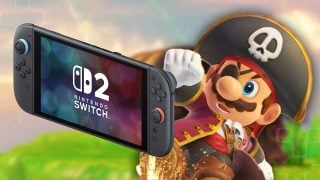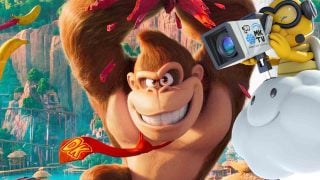This review was written with a pre-release copy of The End of YoRHa Edition. It was constructed after several hours of play of the Switch version preceded by the reviewer playing the PS4 version to completion some time ago.
On occasion, one can get the sense that games considered “artful” and games considered “fun” don’t have much overlap. It depends on the individual’s subjectivity, of course, but even jokey adages like “every game now is either about a guy with a gun or a girl with depression” subtly divides games into seemingly mutually exclusive categories. If you want your game to mean something, apparently you can’t make it too entertaining (unless you’re going for a subversive angle where the fun part is wrong of you to do, or something).
NieR: Automata eschews all conventional thought on the matter – and a lot of matters, actually. The collaboration between existentially dreadful genius Yoko Taro and action game maestros PlatinumGames is a game of raw sociology, philosophy, and humanity. It is also a game where you can very easily see android butt and explode the main character to more easily peep her underwear. Surely this should create a tonal clash that trivializes the artistry and dampens the sexuality. But somehow, it all works, creating a masterful blend of action, tragedy, death, beauty, and meaning that – despite some rough edges (partially compensated) in the Switch port – is worth playing at some point, provided you can handle the weight.

Thousands of years in the future, mankind wages war from the moon against aliens who invaded the earth’s surface. Both sides use robotic apparati as proxies in the war: humans with anthropoid androids, the aliens with more clunky and antiquated machines. The player initially fills the shoes of 2B, a no-nonsense combat android prone to rare outbursts of emotion, who battles alongside 9S, a snarky and more talkative recon android assisting her as they war against the machines. But it doesn’t take long for the two to notice that the machines they fight are gaining self-actualization – acting like they have emotions even when 9S insists that they do not.
What begins as simple premise gives way to something stranger, more introspective, and meaningful. The conflict between machines and androids reflect upon human struggles in a way that is understated but easily grasped. Machines learn how to be “human” in the same manner we all do – through social enculturation and interaction. Contradictions in assumptions are exposed and examined thoroughly. Through analogy, the game presents a dialectical framework not just of how these robots become people, but how people become people – wisely avoiding direct 1:1 allegory in all areas to reap sorrow from tragic events. It casts no moral judgments for the player, no sense that there is an overseeing force dictating whether your actions are right or wrong. It simply provides ideas for you to ponder, meanings for you to question, as you experience a cyclically mournful existence of life and death.
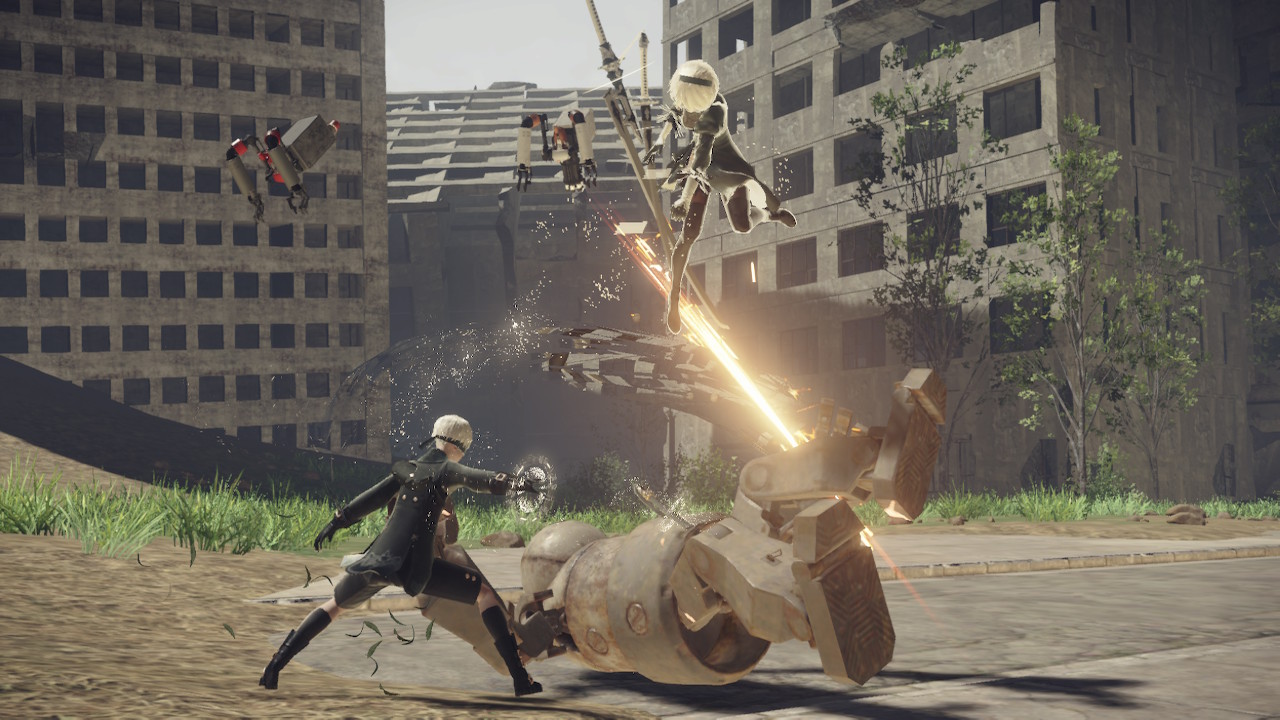
Does that all sound heavy? Don’t worry, maybe you won’t even get bogged down in your own reflection, considering just how fun the freakin’ thing is. 2B handles as smooth as butter with responsive dodging and insane combo potential, with four weapon types to pick from for two attack slots (light and heavy), which, alongside the usual huge array of weapons for a Drakenier title, leads to a huge variety of options in combat, bolstered by your projectile-wielding pods. While typically a smooth Platinum style spectacle fighter, the game can also shift into more shmup territory, especially when you utilize hacking (which is a little top down shooter symbolizing the enemy you fight rather than a puzzle minigame or the like). Toss in Yoko Taro’s usual weapon stories (which are just as harrowing as ever) and the loadout becomes distinct and memorable. It’s not the deepest Platinum combat system ever, but it serves its secondary role to the story with flying colors.
It really is stunning how much of Automata’s disparate functions gel together. While I jabbed at 2B’s design in the intro, it is extremely unique, memorable, and – yes – hot (I think the much angrier and more wild looking A2 is even hotter ok I’ll stop being a lesbian now), and everything else about Akihiko Yoshida’s character designs, the endearingly chunky look of the machines, and the sparse, slightly washed out landscape is dazzling. Even the UI is among the best out there – clean AND stylized, the exact sort of thing a robot OS would look like. It’s worth noting however that this is the area where the Switch port (understandably) falters, losing some fidelity and more pressingly framerate compared to other consoles. While the Switch port sacrifice of graphics for portability is a well known one where each case should be considered individually, Automata loses just enough sharpness – especially in hacking segments (meant to be smooth and clean and instead feeling chunky) – while not feeling quite as benefited from portability as some, considering its subject matter requires focus most of the time. At least the cutscene framerate is the same as in other versions.
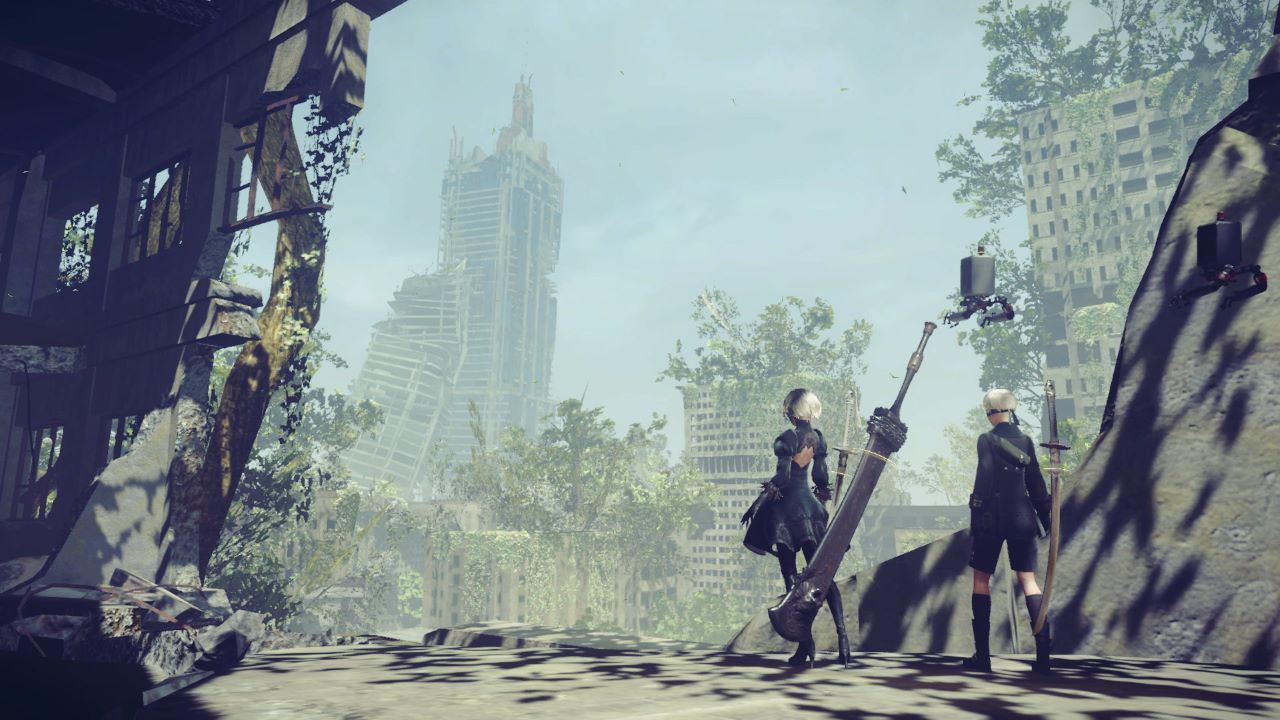
Not to say the Switch version doesn’t have other benefits of its own. For one thing – it has motion controls! No, I’m not joking. Slide or flip (depending on settings) your controller or handheld console and 2B will dodge in the given direction. Is it necessary? Useful? Functional even? Not in my playtime, but I find its inclusion an utterly fascinating little touch. I can imagine someone who jerks their controller around more in play dodging fortuitously at the right moment and the feature vindicating itself in one moment. The Switch version also has DLC costumes, though I couldn’t obtain them during pre-release – whether cuz I goofed and missed the button to obtain them, or them simply not being available til launch day, I couldn’t say. Either way, that plus the inclusion of previous DLC does make the port at least worthy of consideration if you don’t care about graphics.
And everything else appears to be lovingly preserved. No words of laudation can properly praise the greatness of Keiichi Okabe’s dynamic soundtrack, which pixellates and adds vocals with such smoothness that you would never guess it’s context sensitive. Every single track is phenomenal, from the placid Peaceful Rest to the frenetic Bipolar Nightmare to the heartrending, desperate plea of Weight of the World, the game’s showstopper credits song. Each time you listen to it over the course of the game gets more and more impactful, culminating in one of the most awe-inspiring performances ever in a video game.
“Each time,” you ask? Yes, Automata has many endings – 26, in fact, one for each letter of the alphabet. While most are jokey or generally insubstantial (such as gag endings when you remove your character’s OS chip or eat a fish), there are five Big ones you’ll encounter over the course of a playthrough. The first couple are, in my opinion, enjoyable if perhaps not too revolutionary, but by the time you reach the depths of the narrative you’ll be plumbing your tear ducts for leaks. It all concludes in one final climax that represents everything the game could be about and more in one of the most haunting and beautiful endings I’ve ever experienced. I dare not dive further into the details out of fear for spoiling a single second, but it’s one that’s stuck with me nearly daily for years.
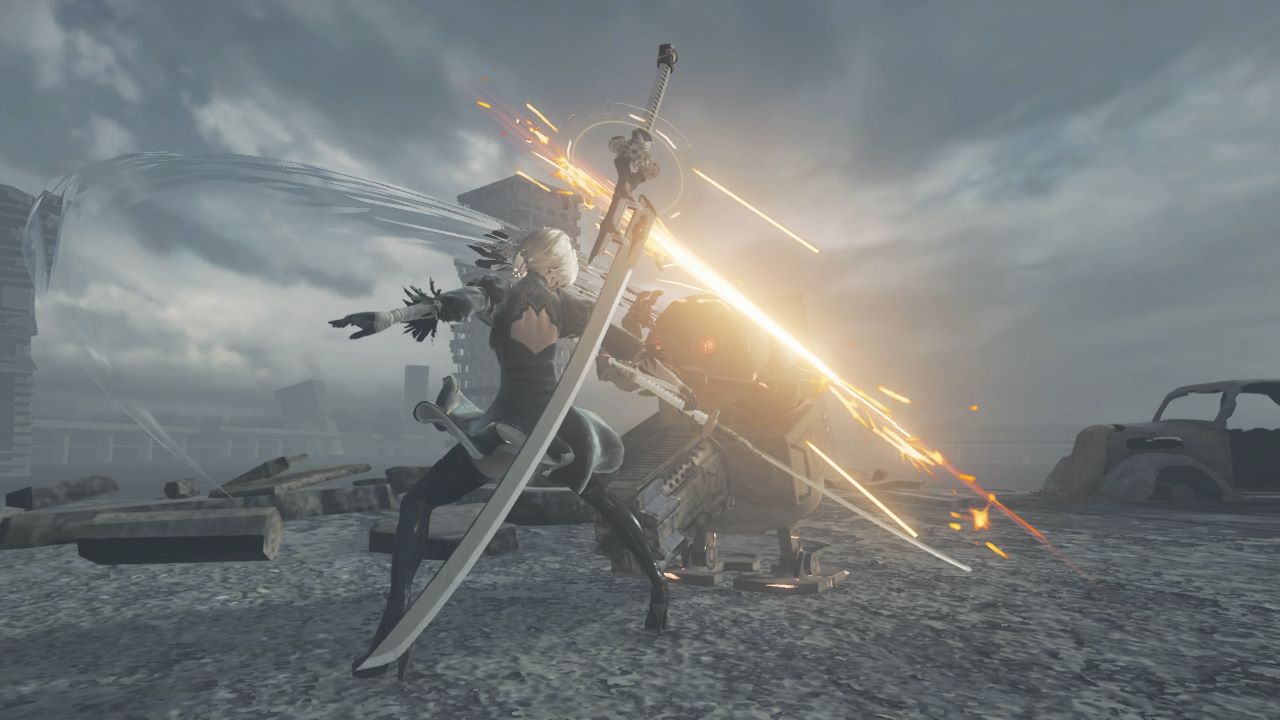
And, if nothing else, NieR: Automata WILL stick with you. It’s not some trite pretentious bore than can be blitzed in a couple hours, nor is it a mindless hack ‘n’ slash you’ll turn your brain off two seconds into. It’s dark, violent, samsaric, despairing, and above all meaningful. Playing it for the first time back in the day helped open my eyes to what art video games could become, what thought could be put into its creation. While the Switch End of YoRHa port is a trade-off, just jagged enough that I can’t heartily recommend it over other versions, if it gets you to play the game in any form then it’s more than worth it. You’ll get out of it what you put in. There’s a significant chance you’ll be a different person after you finish it. It is one of the greatest games ever made. Glory to Mankind.
Leave a Comment
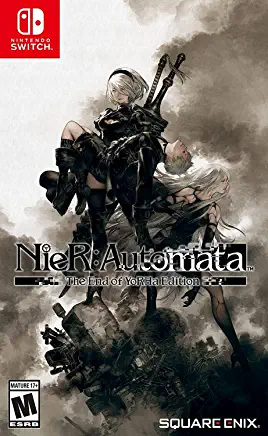
System: Nintendo Switch
Release Date: October 6, 2022
Categories: Action RPG
Publisher: Square Enix
Developer: PlatinumGames
